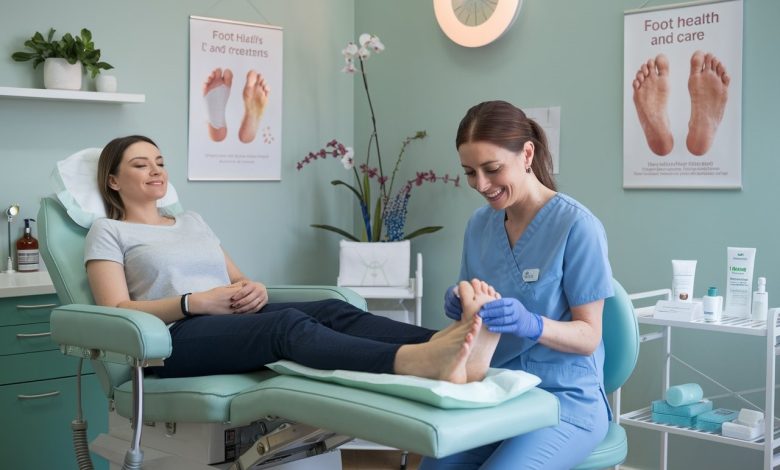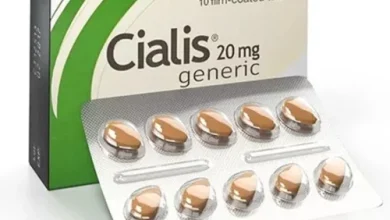How to Drain an Ingrown Toenail: What You Need to Know and When to Seek Help
How to Drain an Ingrown Toenail: What You Need to Know and When to Seek Help

Ingrown toenails are more than just a minor inconvenience. They can be painful, unsightly, and, if not treated properly, lead to infection. Many people face this issue at some point in their lives, and knowing how to deal with it effectively can save you from a lot of discomfort and potential complications.
This blog will cover everything you need to know about how to drain an ingrown toenail safely, when it’s best to seek professional help, and how to prevent it from happening again.
What is an Ingrown Toenail?
An ingrown toenail occurs when the side or corner of a toenail grows into the soft flesh of the toe. This often leads to pain, swelling, redness, and sometimes infection. The condition commonly affects the big toe, although other toes can be affected as well. People with curved or thick toenails, improper trimming habits, or those who frequently wear tight shoes are more susceptible to developing ingrown toenails.
Causes of Ingrown Toenails
Understanding the causes of ingrown toenails can help you avoid future occurrences. Here are some of the most common causes:
- Improper nail trimming: Cutting your toenails too short or rounding the edges can encourage the nail to grow into the skin.
- Tight shoes: Footwear that puts too much pressure on the toes, especially high heels and narrow-toed shoes, can push the nail into the surrounding skin.
- Injury to the toe: A stubbed toe or other injuries can cause the nail to grow abnormally.
- Genetics: Some people are more predisposed to ingrown toenails due to the natural shape and growth pattern of their nails.
- Poor foot hygiene: Failing to keep your feet clean and dry can lead to infections, making ingrown toenails more likely.
Signs and Symptoms of an Ingrown Toenail
Before you learn how to drain an ingrown toenail, it’s important to recognize the symptoms:
- Pain and tenderness on one or both sides of the toenail.
- Redness around the affected area.
- Swelling of the toe.
- Infection signs, such as pus or warmth around the toe.
- Difficulty walking or wearing shoes due to the pain.
If you notice any of these symptoms, especially if they worsen over time, taking action early is key to preventing infection and further complications.
Should You Drain an Ingrown Toenail at Home?
If you’re experiencing a mild ingrown toenail, there are some steps you can take at home to alleviate the discomfort and prevent the situation from getting worse. However, it’s essential to remember that draining an ingrown toenail yourself can pose risks, especially if done improperly.
How to Drain an Ingrown Toenail: A Step-by-Step Guide
Here is a step-by-step guide to help you safely manage a mild ingrown toenail at home:
1. Soak Your Foot
Start by soaking your affected foot in warm, soapy water. Adding Epsom salts can help reduce inflammation and soften the skin, making it easier to manage the ingrown nail. Soak for about 15-20 minutes, two to three times a day. This also helps to keep the area clean and reduces the risk of infection.
2. Lift the Nail Carefully
After soaking, gently lift the edge of the ingrown nail with a clean, sterilized nail file or cotton swab. This may relieve pressure and prevent the nail from continuing to grow into the skin. Be very gentle, and avoid forcing the nail, as this could cause more pain and lead to infection.
3. Use a Small Piece of Cotton
Place a tiny piece of cotton or dental floss under the edge of the nail. This will help lift the nail away from the skin, allowing it to grow in the right direction. Change the cotton daily, and keep the area clean.
4. Apply Antibiotic Ointment
To prevent infection, apply a small amount of antibiotic ointment to the affected area. Cover the toe with a sterile bandage to protect it from dirt and further irritation.
5. Take Over-the-Counter Pain Relievers
If you’re experiencing pain, you can take over-the-counter pain relievers like ibuprofen or acetaminophen. These can help reduce inflammation and discomfort.
When to Seek Medical Help
While home remedies can be effective for mild cases, there are situations where you should seek professional help. Here’s when it’s time to consult a podiatrist or healthcare provider:
1. Severe Pain and Swelling
If your toe becomes extremely painful or swollen, it may be a sign of a more serious issue, like an infection. In this case, it’s best to see a doctor immediately.
2. Signs of Infection
If you notice pus, warmth, or redness spreading around the affected area, these are clear signs of infection. Ignoring an infected ingrown toenail can lead to more severe complications, such as cellulitis or even sepsis.
3. Recurring Ingrown Toenails
If ingrown toenails are a recurring issue for you, it might be time to see a professional. A podiatrist can perform minor procedures to correct the nail’s growth pattern, preventing future occurrences.
4. Underlying Medical Conditions
If you have diabetes, poor circulation, or a weakened immune system, managing an ingrown toenail on your own could be risky. In such cases, it’s best to seek medical help right away to avoid complications.
Medical Treatments for Ingrown Toenails
If home treatments are not effective, or the ingrown toenail becomes infected, a healthcare provider may recommend the following treatments:
1. Partial Nail Removal
In some cases, a doctor may remove part of the ingrown toenail. This is done under local anesthesia and can provide immediate relief. The doctor will cut and remove the section of the nail that’s causing the problem, allowing the toe to heal correctly.
2. Total Nail Removal
For more severe or chronic cases, the entire toenail may need to be removed. This procedure, called a matrixectomy, involves removing the entire nail and sometimes the nail bed to prevent future ingrown nails from forming.
3. Antibiotics
If an infection is present, your doctor may prescribe antibiotics to clear it up. Antibiotics can come in the form of oral medication or topical creams, depending on the severity of the infection.
How to Prevent Ingrown Toenails
Prevention is always better than cure, and fortunately, there are several steps you can take to prevent ingrown toenails in the future:
- Proper Nail Trimming: Trim your nails straight across, without rounding the edges. Avoid cutting them too short, as this increases the risk of the nail growing into the skin.
- Wear Proper Footwear: Choose shoes that provide plenty of room for your toes. Avoid tight shoes and high heels, which can press the nail into the skin.
- Keep Feet Clean and Dry: Good foot hygiene is essential for preventing ingrown toenails. Make sure to wash your feet regularly, and dry them thoroughly to avoid fungal infections.
- Regular Pedicures: If you’re prone to ingrown toenails, regular pedicures can help keep your nails trimmed properly and catch any early signs of trouble.
Conclusion
Knowing how to drain an ingrown toenail at home can be helpful for mild cases, but it’s important to be cautious. If you’re unsure or the condition worsens, seeking professional help is the best course of action. Remember to take steps to prevent future ingrown toenails by practicing proper foot care and wearing comfortable shoes. By staying proactive, you can avoid the discomfort and complications associated with this common foot problem.









